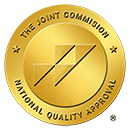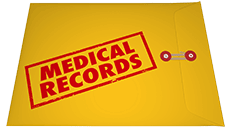Warning Signs of Pneumonia
There are more than 30 different types of pneumonia, which can be caused by bacteria, fungus infections, viruses and, rarely, parasites. It is an inflammation or swelling of the tissues in the lungs, causing the air sacs (alveoli) that absorb the oxygen we breathe to fill with fluid. Breathing becomes difficult and painful, and in severe cases the illness is extremely serious.
Who Gets Pneumonia?
Just about anyone can develop pneumonia, since this infection travels through communities like coughs and colds. In fact, if you’ve recently had a cold or the flu you’re more at risk of develop pneumonia. The old and the very young are in the highest risk groups, along with anyone who suffers from chronic diseases such as asthma or COPD, diabetes or kidney diseases.
People with other long term illnesses can also find themselves in high risk groups, such as those on drugs that suppress the immune system, people with HIV or AIDs and those receiving chemotherapy. Some lifestyle choices can also mean a higher risk of pneumonia, and these include smoking or drinking alcohol to excess.
It’s common for people in hospital to develop pneumonia because their other illnesses have lowered their germ resistance, not because hospitals are necessarily unhealthy places to be.
What Are the Symptoms?
Symptoms can range from very mild to very severe, and in some cases they can be so mild you won’t even realize you have pneumonia. You may notice a cough and maybe feel a little more breathless than normal when climbing stairs. Often you’ll shrug it off and wait to see what happens, because the symptoms aren’t severe enough to cause concern.
Warning Signs of Pneumonia
Common Pneumonia symptoms that need treatment include:
- Loss of appetite and fatigue.
- Chest pain when you breathe or cough.
- Confusion or changes in mental awareness (in adults age 65 and older).
- Cough, which may produce phlegm.
- Fatigue.
- Fever, sweating and shaking chills.
- Lower than normal body temperature (in adults older than age 65 and people with weak immune systems).
- Nausea, vomiting or diarrhea.
- Shortness of breath
- Clammy skin or profuse sweating.
- Shaking chills.
- A cold or flu that gets suddenly worse
Symptoms can also depend on the cause of pneumonia, whether it is bacterial or viral.
- Viral pneumonia symptoms include those similar to flu such as headache, muscle aches and headaches, fever and a dry cough. It may get worse instead of better within 36 hours, with fever getting higher and possibly a blueness around the lips as oxygen levels fall.
- Bacterial pneumonia causes rapid breathing and pulse rates. Patients may have a temperature of 105 degrees F and show confusion or be delirious.
If pneumonia isn’t treated, complications can set in. These include developing bacteremia where infection spreads into the bloodstream, lung abscesses which can generally be treated with antibiotics, or pleural effusion in which fluid builds up in in the narrow space between layers of lung tissue. This can become infected and may need to be drained.
Diagnosing Pneumonia
When you go to the doctor, your medical history is taken into account, including such things as whether you smoke tobacco, if you’ve had either a cold or flu recently, if you’ve come into contact with sick people at home or work, your hobbies and your exposure to pets or other animals.
The doctor will listen to your breathing through a stethoscope, which will reveal any bubbling, wheezing or crackling in the lungs, and may order further tests to help diagnosis. These can include:
- Chest X-rays
- Blood tests
- A CT scan
- Sputum tests
- Examination of pleural fluids from the lungs, or a pulse oximetry to measure the oxygen levels in the bloodstream.
Which tests you need may be determined by your age and risk factors, and if the doctor thinks you may have pneumonia after the preliminary exam.
When To Get Urgent Help
Some symptoms of pneumonia need urgent medical care, so don’t delay if you experience any of the following:
- Trouble breathing to the extent you worry you don’t have the strength to keep on breathing.
- Feeling faint when you stand.
- Severe chest pain that squeezes or feels crushing.
- Lots of blood in coughed-up mucus.
- Chills or fever of 101 degrees F or higher
- Vomiting
It’s easy to confuse mucus from the lungs with that which runs from the nasal passages and runs down the back of the throat. Nasal drip (the mucus that runs from the nasal passages) isn’t something to worry about, while mucus coughed up from the lungs can be.
In some instances, your doctor may advise a ‘wait and see’ period, as the infection may clear up on its own without further intervention. Sometimes patients with mild symptoms are said to have ‘walking pneumonia’. This means you’re showing signs of the illness, but are able to carry on with your normal daily activities. The symptoms may resolve on their own after a short time, but if they get worse you’ll likely be offered further treatment.




